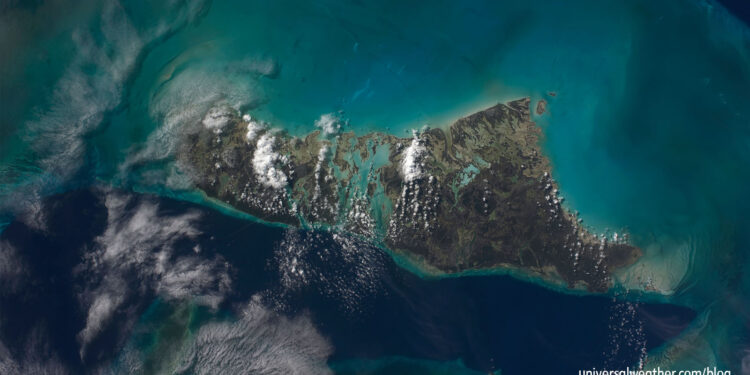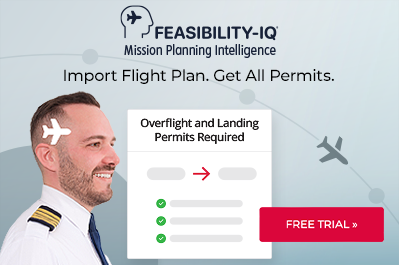Business Aircraft Operations to the Bahamas – Part 1: Airports, Permits & CIQ

This business aviation blog post is part of a series on operating to the Bahamas.
The Commonwealth of the Bahamas – an island nation with more than 700 islands, cays and islets – stretches from just offshore Florida down to the Turks and Caicos Island group. This island group remains a very popular seasonal destination with modern-day general aviation (GA) equipped tourists and business travelers.
If you’re planning to operate a business aircraft to the Bahamas, the following is an overview of what you need to know:
1. Popular airports
The most frequent destination for GA is Nassau (MYNN). Other popular airports of entry (AOE) are Treasure Cay (MYAT), North Eleuthera (MYEH) and Grand Bahama Intl (MYGF). In addition there are many smaller non-AOEs used by GA, but these locations have various operating limitations. Smaller airports in the Bahamas often operate only sunrise to sunset, offer limited aircraft services, and have shorter runways. As aviation fuel may not be available or may be in limited supply at smaller airport locations, fuel requirements should always be confirmed in advance.
2. Airport and CIQ hours
MYNN is a 24-hour AOE with customs, immigration, and quarantine (CIQ) hours of 0700-2100 local. CIQ is cleared for GA at the fixed-base operators (FBOs), and customs overtime is possible with a recommended 24 hours advance notification. At other locations in the Bahamas you will clear CIQ either in the main terminal or at a specified separate area.
MYGF is a 24-hour AOE with normal CIQ hours of 0900-1900 local and overtime available with advance arrangements.
MYAT operates 0900-1700 local, for both airport and CIQ, with customs and airport overtime available on a case-by-case basis.
MYEH, meanwhile, is a 0730 – sunset operation. As MYEH does not have runway lights, overtime is usually not possible but may be requested.
3. Clearing CIQ
A general declaration in addition to arrival/departure cards are needed for operations to the Bahamas. Immigration cards can be completed by your ground handler, but the information will still have to be transferred onto the original forms for each passenger. The CIQ process at MYNN is very easy. A customer service rep will meet and greet passengers/crew upon arrival and escort them through CIQ. The actual CIQ clearance normally takes no more than 10 minutes. Visa requirements depend upon nationality, so it’s important to check on applicable requirements in advance. While the Bahamas is part of the CARICOM community it currently does not require transmission of CARICOM APIS. This, however, may change in future if the government deems this requirement necessary.
4. CIQ overtime charges
When CIQ overtime is available additional charges apply. Cost of CIQ overtime varies depending upon the location. These charges can be settled on credit with advance arrangement.
5. Permit requirements
Overflight permits are not normally needed for travel to the Bahamas, but this depends on where the aircraft is coming from/going to. Landing permits are necessary for charter (non-scheduled commercial) but not for private non-revenue flights. Official lead time for one shot charter permits is four business days. In many cases, however, landing permits may be obtained on shorter notice. Short notice requests are at the Civil Aviation Authority’s (CAA’s) discretion and depend upon what documents they may already have on file. Note that charter landing permits are available for a single trip (one shot) or for multiple trips over a specific time frame (blanket).
6. Landing permit considerations
Bahamas landing permits are processed by CAA during normal 0900-1700 local Monday-Friday. CAA is normally closed on weekends and bank holidays, but there are after-hours numbers for urgent permit requests. Documentation needed for landing permits includes certificates of registration and airworthiness, worldwide insurance, and an application form with specific operator information. Ad-hoc permits are valid for the entire Zulu day. Permit revisions are normally needed for schedule changes, outside the validity period, or changes to destination(s) in the Bahamas. If you’re substituting aircraft, a new permit application will be required.
7. Multi-entry landing permits
Multi-entry permits – known as a Foreign Operators/Carriers Air Transport license – are available with validity periods of one month, three months, six months, or 12 months. These permits allow operators to travel to the Bahamas for an unlimited number of trips during the validity period. To obtain a multi-entry permit you’ll need to submit a 298 Air Taxi form, air operator certificate (AOC), worldwide insurance, and certificates of registration and airworthiness. Generally, a few weeks is needed to process these permits and to review submitted documentation. The process is typically longer for fleet permits, due to the volume of documentation that needs to be reviewed. Be aware that CAA always reviews all documentation in detail.
8. Annual permit considerations
When applying for annual permits operators will be given a temporary license that allows unlimited flights on a month-to-month basis while the annual permit is being processed. While your Bahamian representative, technically, is responsible to ensure that the temporary license does not expire, operators are advised to also keep track of expiration dates.
Conclusion
The Bahamas is a relatively straight-forward operating environment and a welcoming destination for GA operations. Charter operators who travel to the Bahamas frequently should consider obtaining multi-entry permits.
Questions?
If you have any questions about this article or would like assistance planning your next trip to the Bahamas, contact me at jacobreader@univ-wea.com.
Stay tuned for Part 2, which covers ground handling and aviation fuel for travel to the Bahamas.




